Seomjingang River (섬진강)
.0M 2022-08-25
Okgwa-myeon, Gokseong-gun, Jeollanam-do
+82-61-360-8419
The Seomjingang River, one of the four major rivers in Korea, starts from Imsil and Sunchang. It merges with several bodies of water in Gokseong, Gurye and Hadong before flowing into the South Sea.
In Gokseong, the Seomjingang River is also known as the Sunjagang River. It flows about 36 kilometers through the region. A number of big and small valleys throughout the length of the river provide fantastic views and relaxation spots all year round. Also, Riverside Festival and Seomjingang Literature Forum are held every summer to offer fun summer activities along the river.
Samhwa Gwangwang Nongwon (삼화관광농원)
4.3Km 2024-03-04
208 Immyeon-ro, Gyeom-myeon, Gokseong-gun, Jeollanam-do
061-362-8586,7
Samhwa Gwangwang Nongwon is a Korean restaurant specializing in duck dishes. Its signature menu is the ori jeongol (duck hot pot). The rich broth, boiled with ample duck meat, vegetables, and perilla seeds, is exceptionally flavorful. Another popular dish is the ori jumulleok (spicy stir-fried marinated duck), where tender meat seasoned with spicy yet sweet sauce pairs perfectly with steamed white rice.
Okcheongol Hanjeongsik (옥천골한정식)
7.4Km 2024-04-18
78 Gyeongcheon 1-ro, Sunchang-eup, Sunchang-gun, Jeonbuk-do
Okcheongol Hanjeongsik is a traditional restaurant that opened in the 1990s, specializing in authentic Korean table d'hote. The signature dish is so bulgogi hanjeongsik (beef bulgogi table d'hote). It features beef and pork bulgogi grilled on a charcoal, along with grilled yellow croaker and over 20 side dishes, including soybean paste jjigae, all served on one table.
Maewoldang (매월당)
7.7Km 2024-04-07
47-34 Maechon-gil, Geumji-myeon, Namwon-si, Jeonbuk-do
+82-63-636-1278
Maewoldang is a café that sells traditional Korean tea made from hand-picked tea leaves harvested in the wild. Their signature drink is Goryeo dancha (fermented wild tea), made by roasting leaves in an cast-iron pot using traditional methods, sourced from a large wild tea plantation discovered in Namwon's Maechon Village. Visitors can enjoy tea in a traditional thatched-roof house, and reservations are required in advance.
Gokseong Dorimsa Temple (도림사(곡성))
8.1Km 2021-05-14
175, Dorim-ro, Gokseong-gun, Jeollanam-do
+82-61-362-2727
Dorimsa Temple was built by Monk Wonhyo in 660 during the 7th year of King Muyeol. Located approximately 4 kilometers west of Gokseong-eup, the temple houses Bogwangjeon Hall, Yaksajeon Hall, and Eungjindang Hall, among other buildings. The nature surrounding the temple is beautiful all year round, and the water flowing through the nearby valley makes it a popular place to visit during the hot summer season.
Sunchang Gochujang Village (순창고추장민속마을)
9.2Km 2024-04-15
9 Baegya-gil, Sunchang-eup, Sunchang-gun, Jeonbuk-do
Sunchang Gochujang Village is home to expert gochujang (Korean chili paste) crafters using the traditional methods. Visitors can learn how to make gochujang and enjoy dishes using it, such as tteokbokki (rice cakes cooked with gochujang) and wild vegetables bibimbap. The village is fully equipped with accommodations, restaurants, seminar rooms, and other facilities, providing perfect conditions for a variety of hands-on experiences.
Sunchang Jangnyu Experience Center (순창장류체험관)
9.2Km 2024-04-07
55, Minsokmaeul-gil, Sunchang-gun, Jeonbuk-do
+82-63-650-5432
Located in front of the Traditional Gochujang Folk Village in Sunchang, Jeollabuk-do, Sunchang Jangnyu Experience Center offers visitors the opportunity to sample and make delicious dishes using Sunchang's famous gochujang (red pepper paste). Visitors can make refined gochujang using traditional methods, along with a variety of other popular dishes such as injeolmi (rice cake coated with powdered soybeans) and twibap (popped rice snack). In addition to a range of experience programs, clean accommodation facilities are also available for program participants.
Sunchang Traditional Paste Museum (순창장류박물관)
9.2Km 2024-04-07
43, Jangnyu-ro, Sunchang-gun, Jeonbuk-do
+82-63-650-1627
Sunchang Traditional Paste Museum offers visitors a look at different traditional paste culture from gochujang (pepper paste) to doenjang (soybean paste). Located across from the Sunchang Gochujang Village, a robot gochujang grandmother greets the visitors by telling the history of Sunchang pepper paste. The exhibition halls inside display the history of various traditional paste and visitors even have a chance to experience the process of making different pastes. The outdoor square attracts people with a terrace displaying earthen wares that are used to contain the fermented sauces, as well as a millstone worked by horse or ox, and an old tomb from the Baekje dynasty.
Sunchang Fermented Food Festival (순창장류축제)
9.2Km 2025-07-11
6-3 Minsongmaeul-gil, Sunchang-gun, Jeonbuk-do
+82-63-650-1624
Experience the most iconic spicy flavor of Korean cuisine, gochujang (red chili paste). This festival takes place in Sunchang, the renowned home of gochujang. Visitors can try spicy and savory dishes made with Sunchang gochujang, partake in programs such as making red chili paste, and check out the festival’s performances, exhibitions, and shops. The biggest attraction is the “Sunchang gochujang offering procession to the King.” It is an reenactment based on the records of King Taejo's (born Yi Seong-gye), founder of the Joseon dynasty, love for the taste of Sunchang gochujang. During the event, a music procession and porters with a wagon loaded with crocks of chili paste perform a march around the village. Visitors can also check out the new Fermentation Theme Park, where they can learn the scientific principles of food through microbial experiments.
◎ Tip
Tteokbokki is a must-eat Korean street food. Don’t miss the “Sunchang Tteokbokki Town,” where you can try a variety of tteokbokki dishes made using Sunchang’s fermented sauces.
Gokseong Dangunjeon Shrine (곡성 단군전)
9.5Km 2021-05-27
33, Yeongun 1-gil, Gokseong-gun, Jeollanam-do
+82-61-360-8379
Dangunjeon Shrine was built in honor of Dangun, a legendary figure known to be the founder of Gojoseon, or ancient Korea. He is known to be the grandson of the heavens and the son of Hwanung. According to the legend, Hwanung was approached by a bear and a tiger who wished to become human beings. Hwanung attended to their plea by instructing them to avoid sunlight for 100 days and live only by consuming garlic and mugwort. Unlike the tiger who gave up, the bear followed the instructions faithfully and transformed into a woman, who then married Hwanung and gave birth to Dangun.
Located near Yeonguncheonbyeon in Gokseong-eup, Dangunjeon Shrine was first founded in Hakjeong-ri, Samin-dong in 1916 by Shin Tae-yun, also known as Baekdang, but later moved to its current location and went through reconstruction in 1931. An annual ancestral rite takes place at the shrine on October 3 (National Foundation Day) and March 15 to pay respects to Dangun. Dangunjeon Shrine was also a place where civilians gathered to take an oath of patriotism in action against the Japanese during the Japanese colonization period; a stone plaque commemorating the March 1st Independence Movement and Baekdang Memorial Hall dedicated to Shin Tae-yun can also be found within the area. Shin Tae-yun was captured by Japanese soldiers during the March 1st Independence Movement and served two years in prison.
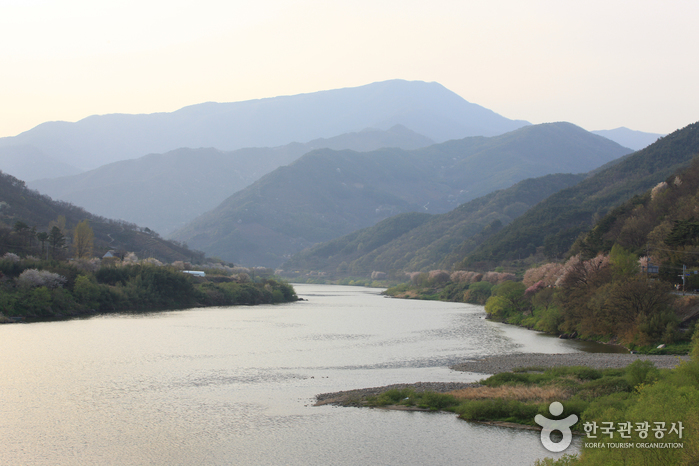

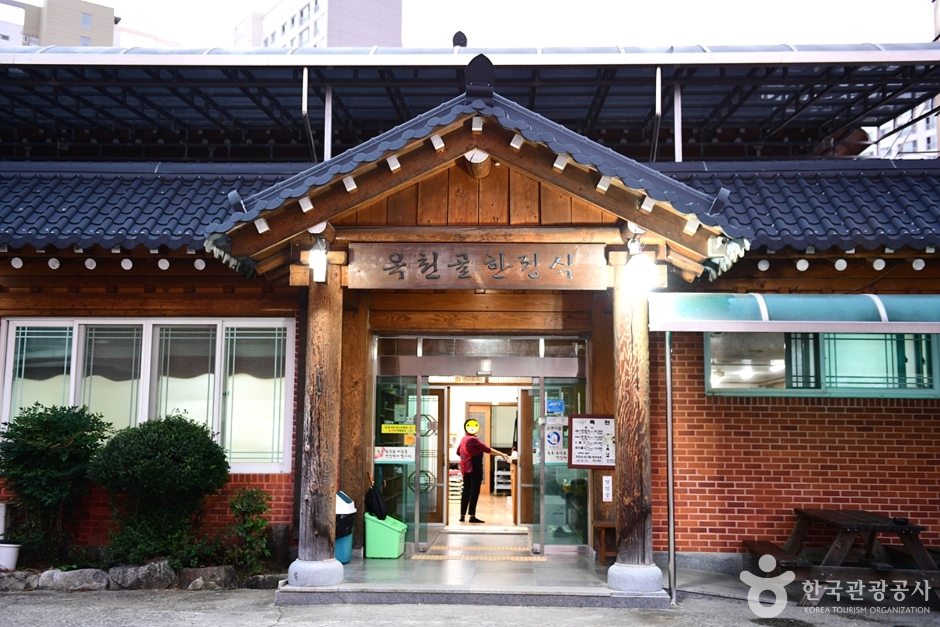
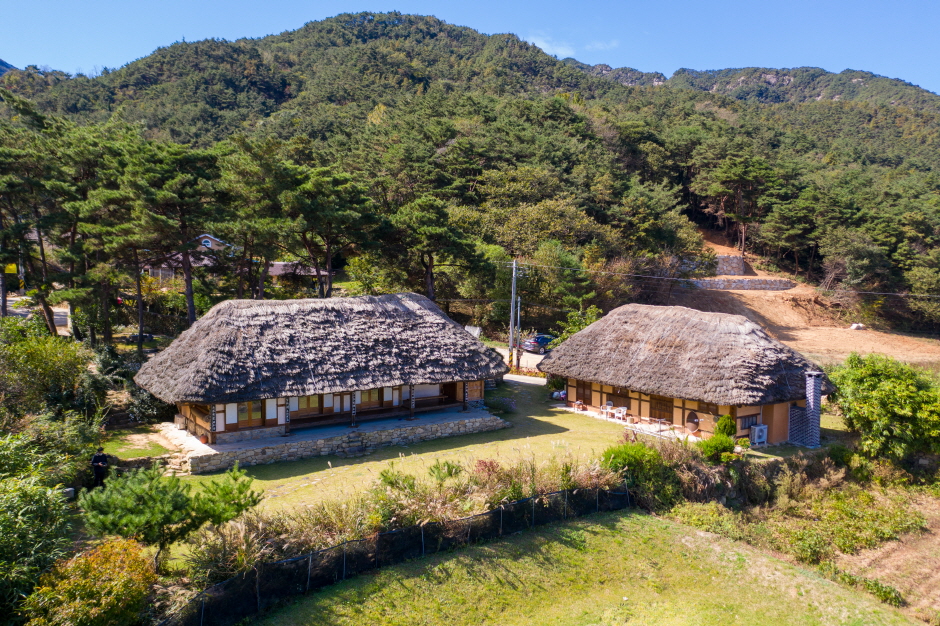
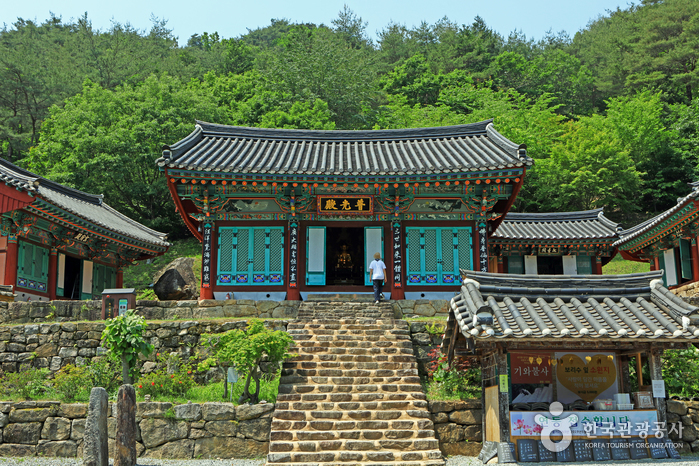
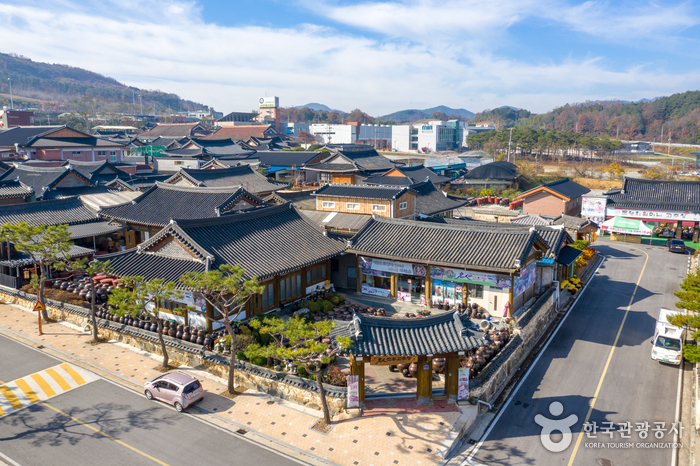
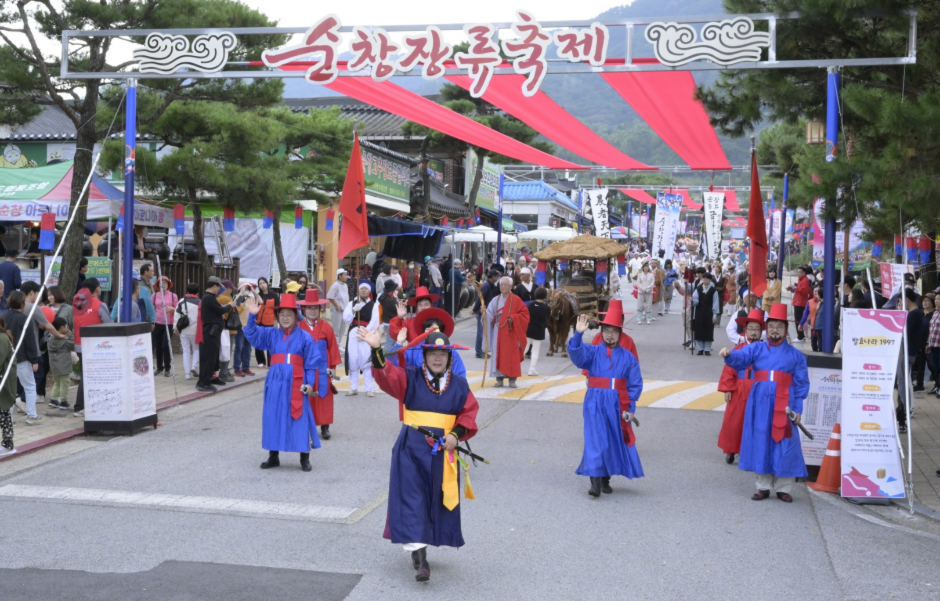
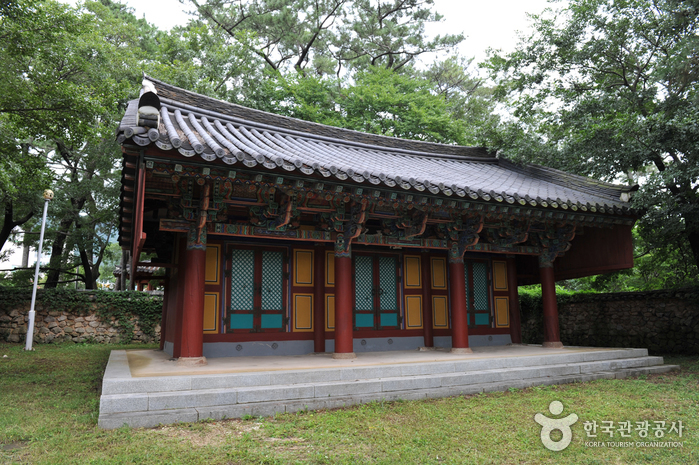
 English
English
 한국어
한국어 日本語
日本語 中文(简体)
中文(简体) Deutsch
Deutsch Français
Français Español
Español Русский
Русский